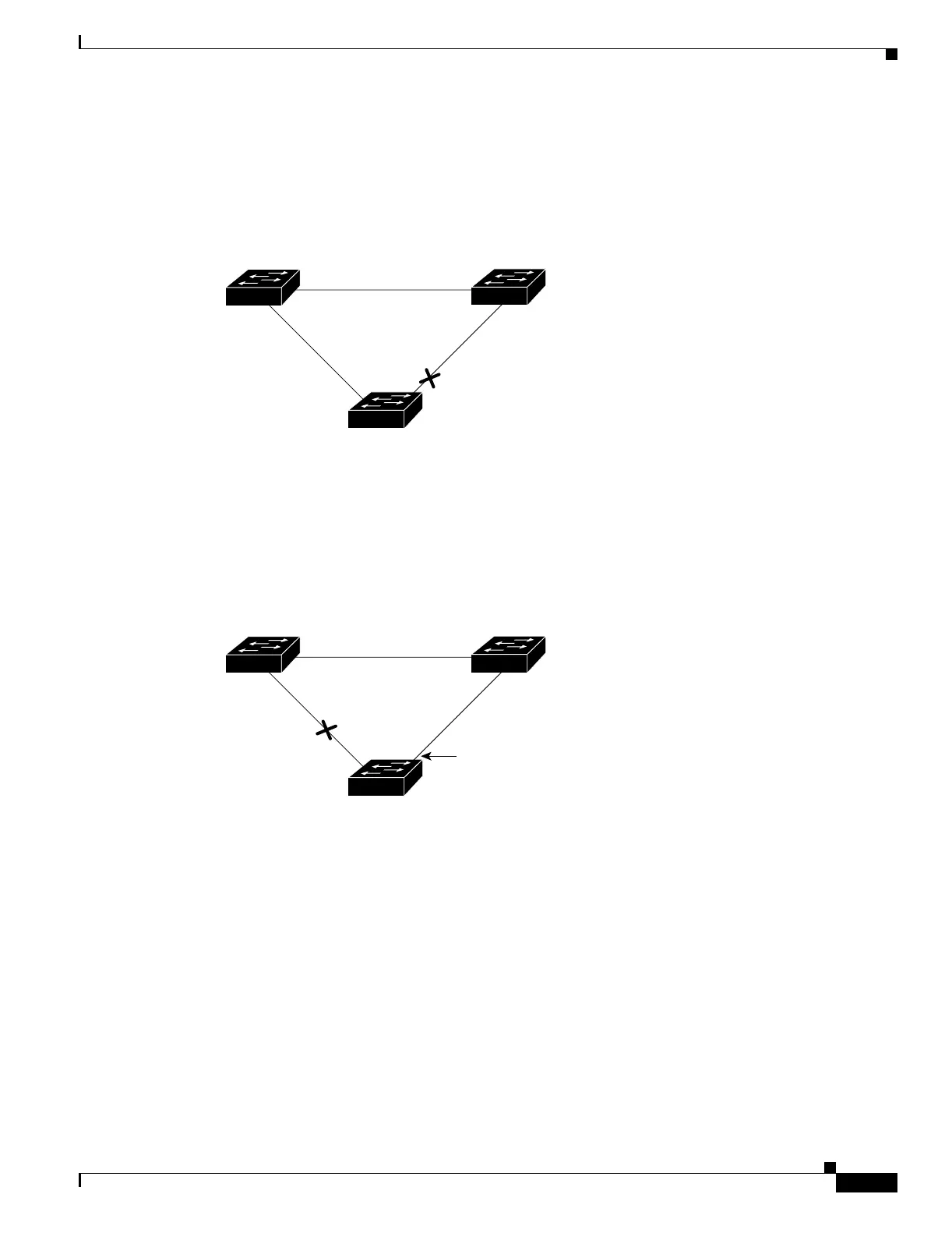16-5
Catalyst 3750 Metro Switch Software Configuration Guide
78-15870-01
Chapter 16 Configuring Optional Spanning-Tree Features
Understanding Optional Spanning-Tree Features
Figure 16-3 shows an example topology with no link failures. Switch A, the root switch, is connected
directly to Switch B over link L1 and to Switch C over link L2. The Layer 2 interface on Switch C that
is connected directly to Switch B is in a blocking state.
Figure 16-3 UplinkFast Example Before Direct Link Failure
If Switch C detects a link failure on the currently active link L2 on the root port (a direct link failure),
UplinkFast unblocks the blocked interface on Switch C and transitions it to the forwarding state without
going through the listening and learning states, as shown in Figure 16-4. This change takes
approximately 1 to 5 seconds.
Figure 16-4 UplinkFast Example After Direct Link Failure
Understanding BackboneFast
BackboneFast detects indirect failures in the core of the backbone. BackboneFast is a complementary
technology to the UplinkFast feature, which responds to failures on links directly connected to access
switches. BackboneFast optimizes the maximum-age timer, which controls the amount of time the
switch stores protocol information received on an interface. When a switch receives an inferior BPDU
from the designated port of another switch, the BPDU is a signal that the other switch might have lost
its path to the root, and BackboneFast tries to find an alternate path to the root. The BackboneFast feature
is supported only when the switch is running PVST+. It is not supported when the switch is running rapid
PVST+ or MSTP.
BackboneFast, which is enabled by using the spanning-tree backbonefast global configuration
command, starts when a root port or blocked interface on a switch receives inferior BPDUs from its
designated switch. An inferior BPDU identifies a switch that declares itself as both the root bridge and
L1
L2 L3
Switch C
Switch A
(Root)
Switch B
Blocked port
43575
L1
L2 L3
Switch C
Switch A
(Root)
Switch B
UplinkFast transitions port
directly to forwarding state.
Link failure
43576

